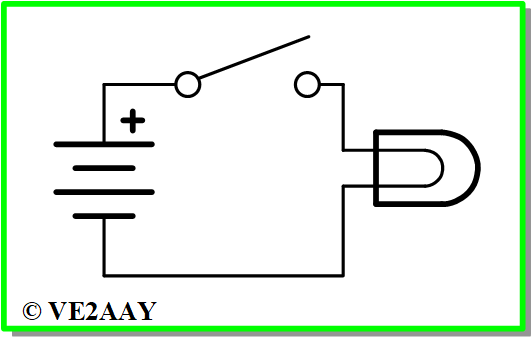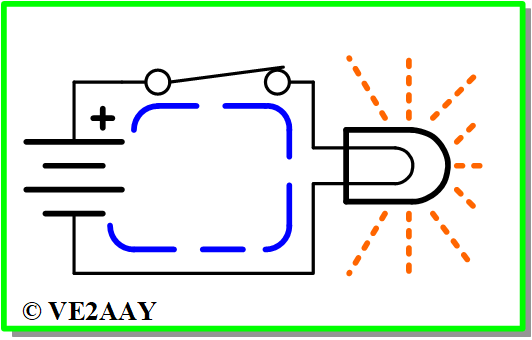Electrical Circuit
Conditions d’achèvement
Electrical Circuit
Circuits are documented as schematic diagrams where standard symbols represent individual components.

- This circuit comprises 3 components, from left to right:
- A battery,
- A switch,
- A light bulb acting as a "load".
- Conductors (wires) interconnect the components.
- The circuit could be a flashlight or some laboratory experiment.
- As depicted, it is an open circuit:
- The switch is an "open" position, there is no continuity.
- The circuit, present across the terminals of the battery, does not form a complete uninterrupted loop.
- No current can flow through the circuit.
- This other representation shows a closed circuit:
- The switch is in a "closed" position.
- A complete and conductive loop is present across the terminals of the battery; a current runs through that path.
- The battery, an electrical energy source, pushes a current through the circuit; that energy source feeds the load where work is performed. The light bulb shines.
- You will have noticed that the terms "open" and "closed" describe the state of the loop (path) or circuit.

Electricity always depends on a return path to the source; this is why you do not want to be part of the circuit when high voltage is involved.
\Modifié le: dimanche, 31 mars 2024, 11:27
